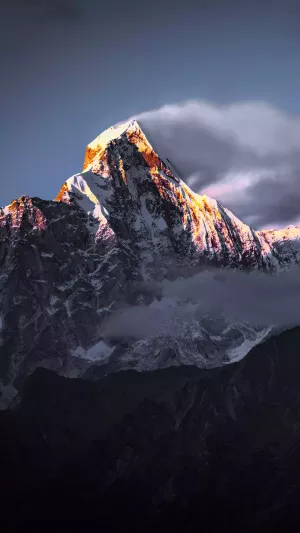The United States of America, spanning almost the entire North American continent from the Atlantic Ocean to the Pacific Ocean, ranks fourth in the world in terms of area. The territory also includes Alaska at the edge of the Arctic and Hawaii as far as the equator in the Pacific Ocean. The vast land of the United States includes a variety of natural landscapes and has the largest number of national parks in the world. Below are some of the most famous mountains in America.
1. Sierra Nevada
The Sierra Nevada is a granite fault block mountain in the southwestern United States, part of the western edge of the Cordillera Mountains. It starts from Larsen Peak in the north and ends at the Tehachapi Mountain Pass in the south.
It is 640 kilometers long and 80 to 130 kilometers wide. It stretches in a roughly north-south direction in eastern California. The mountain was formed during the Nevada orogeny from the end of the Jurassic to the beginning of the Cretaceous. It is generally 1800-3000 meters above sea level, and the mountain slopes from east to west.
The cliff on the east slope is steep, rising above the large basin in the east, with a height difference of 1500-3000 meters. The vegetation is sparse, mostly shrubs and grasses.
The western slope is gently inclined towards the Central Valley of California, with deep canyons cut by many rivers, dense forests, and abundant rain and snow against the moist air of the Pacific Ocean.
2. Rocky Mountains
The Rocky Mountains are the backbone of the American Cordillera Mountains in North America, consisting of many small mountain ranges, known as the "backbone" of North America.
The main mountain range extends from British Columbia, Canada to New Mexico in the southwestern United States. It stretches more than 4,800 kilometers from north to south and is vast and lacks vegetation.
Its name is derived from an Indian tribe name. The majestic Rocky Mountains stretch from north to south for thousands of kilometers.
The entire Rocky Mountains is composed of many small mountains, of which there are 39 named.
With the exception of the St. Lawrence River, almost all the major rivers in North America originate in the Rocky Mountains, which are important watersheds for the continent.
3. The Appalachian Mountains
The Appalachian Mountains are located in the eastern United States, a huge mountain system in the eastern part of North America.
It stretches from Newfoundland and Labrador in Canada to the east of North America and ends south to central Alabama, with a total length of nearly 3,200 kilometers and a width of 130 to 560 kilometers in a northeast-southwest direction.
Forming a natural barrier between the eastern seaboard and the vast lowlands within the continent, it played a vital role in the colonization and development of the continent.
The first 13 British colonies were established in the east of the Appalachian Mountains. The panhandle stretches from New Hampshire in the north to Georgia in the south.
4. Coast Mountains
It is a mountain range on the Pacific coast of North America. South from the southern United States near Los Angeles, north to Kodiak Island in Alaska.
The east of the mountain range is the subsidence zone (port road, valley, bay), and the mountain range itself is cut off by many horizontal valleys and many gorges.
The northern section has higher mountains, abundant rainfall and dense forests. It is famous for its red cedar, fir and hemlock; the southern section has many massive mountains, with an altitude of 600-1200 meters. There is less precipitation, and it is dominated by shrubs.
5. Andes Mountains
The Andes Mountains are located on the west coast of South America, with a length of more than 8,900 kilometers from north to south, making it the longest mountain range in the world.
The Andes Mountains form a continuous barrier from the southern tip of South America to the northernmost Caribbean coast. The Andes Mountains, which separate the narrow west coast area from the rest of the continent, are one of the most important topographical features of the Earth, and have a profound impact on the living conditions of the mountains themselves and their surrounding areas.
The Andes range from Panama all the way to Chile. Running through the western part of the South American continent, it is known as the "backbone of South America". The mountains have many peaks above 6,000 meters above sea level and the peaks are covered with snow all year round, and the region is rich in mineral resources.





